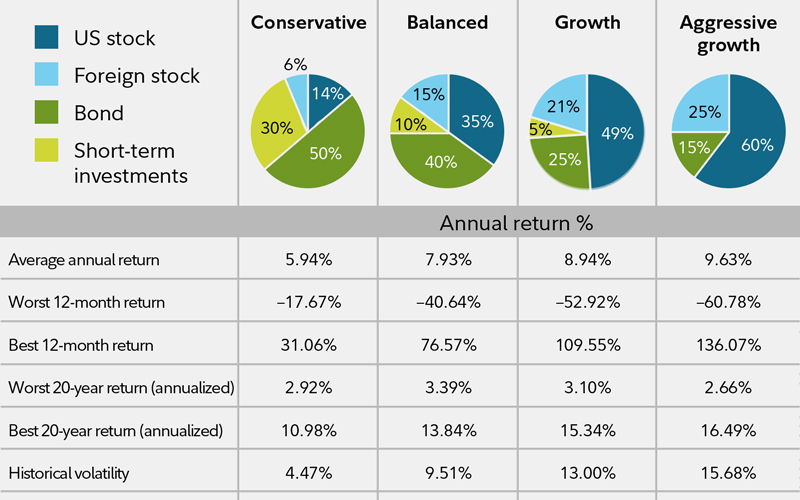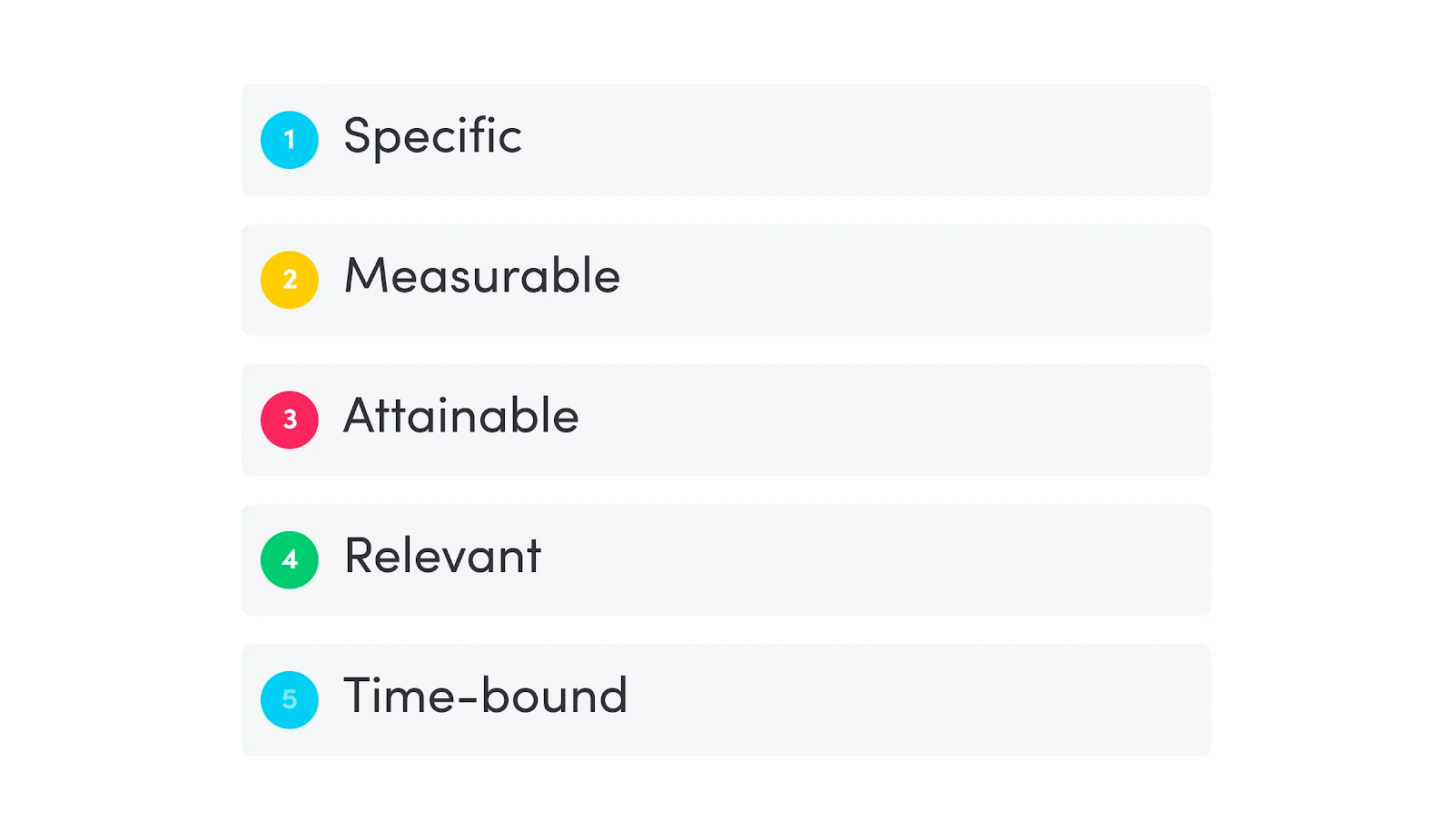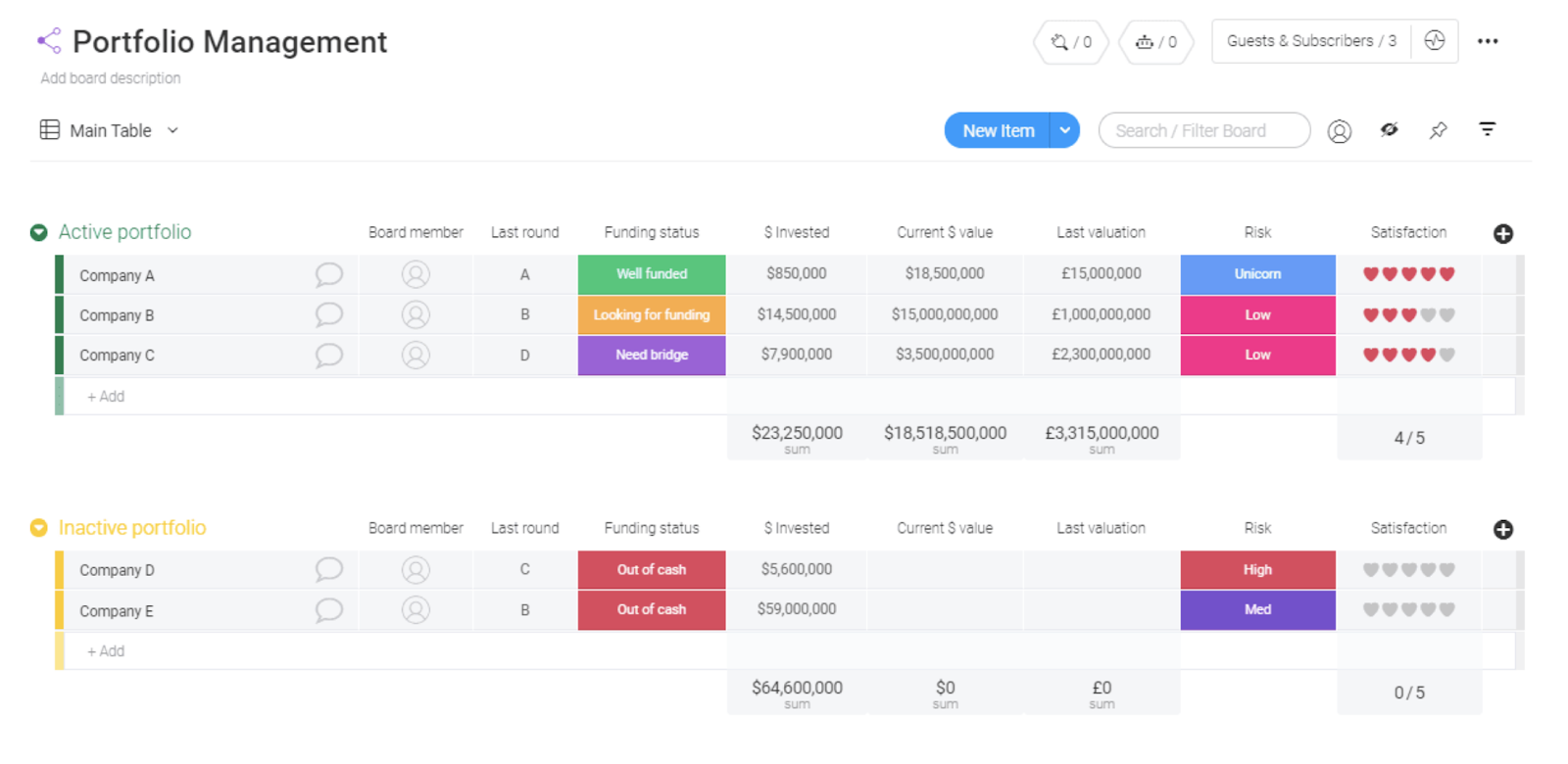Don’t you love it when a plan comes together?
We do, too. But if you want your company to achieve all of its big goals you’ve got to put in a little bit of work.
That’s where portfolio planning comes in.
Portfolio planning is all about strategizing and building your company’s portfolio of investments, projects, or services based on what it is your organization is after.
Translation: portfolio planning helps you put together the perfect blend of risk and reward.
But as always, there’s more to it than that. Portfolio planning is a multi-step process that comes with its own unique applications. But don’t worry, because we’re happy to walk you through it.
This article will explain what portfolio planning is, the benefits of portfolio planning, planning steps, and how you can manage your portfolio using monday.com.
What is portfolio planning?
Portfolio planning is the process of deciding what you want in your portfolio. Don’t get thrown by all these buzzwords, because it’s pretty straightforward.
When people talk about “portfolios”, they’re really just referring to any group of programs or projects that an organization takes on as a way to reach a strategic objective.
Portfolios simply give companies a way to shape and organize their projects and operations to keep an eye on the bigger picture.
You’ll normally hear about portfolio planning in the context of finance. A financial portfolio is a grouping of assets (like stocks, bonds, or a mutual fund), and an investor will use portfolio planning to design a group of assets that meets their risk tolerance, desired return on investment (ROI), and investment time horizon.

But if investment isn’t your thing, don’t panic. Portfolio planning is also used in project management as a way to review your project portfolio to make sure everything your team is doing makes sense.
In the organizational or project management sense, a portfolio could include anything from products or services to projects, properties, inventory, and everything in between.
But just like financial portfolio planning, the goal of portfolio planning in project management is totally the same.
By organizing things centrally, you’ll benefit from a standardized bird’s eye view of your company projects and see which projects are helping your company achieve its strategic goals.
That’s why portfolio planning is so important for businesses trying to boost efficiency.
Portfolio planning helps you determine which projects or products you should be working on, which order you should be tackling them in and how much time and resource should be devoted to it.
Read also: Portfolio management vs project management
What are the benefits of portfolio planning?
OK: so we’ve talked about what portfolio planning is. But why should you care about portfolio planning?
Short answer: it’s going to help you pick winning projects that will help your team shine.
Portfolio planning goes hand-in-hand with a few key benefits, and the first benefit you can expect is an improved project selection process.
Portfolio planning is all about choosing projects that are going to be a good fit for your organization. That’s why the portfolio planning process involves looking at your business goals, risks, available resources, and other criteria to help you decide which projects are going to be right for you.
The second major benefit of portfolio planning is that it helps you develop a big picture of your organizational activity. As teams get bigger and companies expand, a lot of businesses tend to lose sight of their long-term roadmap.
For example, let’s say you take on a huge project that sucks up huge chunks of your company’s time and energy.
Your team might end up spending so much time or resource on this one project, that they start to focus less on ancillary projects until somebody ends up dropping a ball somewhere.
Portfolio planning helps you prevent that and makes sure your team can juggle as many projects as you can without dropping a single thing.
Finally, portfolio planning helps improve your company’s focus on objective business goals.
Portfolio planning encourages teams to constantly assess and reassess how projects fit in with a company’s strategic goals.
If a project starts to look irrelevant, a portfolio manager can use the planning process to either reel that project back in or reallocate resources to a project that does help the company meet its targets.
What are the steps in planning a portfolio?
Portfolio planning can be used by loads of different teams in about a million-and-one different contexts. But no matter what your business does or the type of portfolio you’re trying to manage, the portfolio planning process generally includes 5 steps.
1. Assess your situation
Before you can start planning for your organization’s future, you’ve got to start by taking a long, hard look at your current situation.
If you’re looking at a financial portfolio, that would mean looking at all of your existing assets, liabilities, and investments to try and figure out what you’ve already got.
Outside of the investment bubble, this step revolves on looking at all the projects or programs your business is already involved in.
2. Create goals
After you’ve taken stock of what you’ve already got, it’s time to sit down and come up with realistic goals around where you want your portfolio to take you.

For example, let’s say you own a construction business. You might look at your existing portfolio of building projects and decide that by the end of 2025, you want your company to be the state’s top housing contractor.
In the context of finance, this step would be more about looking at different benchmarks to decide what sort of return on investment (ROI) you’d like to achieve through your assets.
3. Come up with a strategy
The next step in portfolio planning is to determine a strategy you’d like to apply towards selecting and maintaining items in your portfolio.
In the wonderful world of investment strategy, you’d call this “asset allocation”. Asset allocation is the process of deciding what mix of asset classes you’d like to be in your portfolio so that it can match your tolerance for risk.
But again, this rule applies to any type of portfolio. At the end of the day, no matter what’s in your portfolio, you’re going to have to come up with a strategy around how many projects, what type of projects, and the amount of risk you’re willing to take on to meet your company’s goals.
Read also: The importance of project portfolio risk management
4. Choose wisely
After you’ve developed an asset allocation strategy, it’s time to choose what you should add to your portfolio.
Take a look at your goals and your allocation strategy. Then, think and choose carefully so that you can take on projects, product lines, or assets that fit in with those goals and your strategy.
5. Measure, measure, measure
Your organization, its needs and its goals are going to change over time. You’ve just got to make sure that your portfolio changes along with those needs and goals.
One of the biggest mistakes teams make when planning a portfolio is that they forget to reassess it on a regular basis.In order to be effective, you’ve got to constantly measure your portfolio against some kind of benchmark, report that performance, and open up regular discussions about whether anything in your portfolio needs rebalancing.
By following these steps, you’ll be able to plan a portfolio that meets your risk appetite and strategic goals.
How can you use monday.com to plan your portfolio?
So, it’s all well and good talking about how great portfolio planning is — but how do you do it?
Well, if you’re using monday.com, portfolio planning is super easy.
You see, we’ve got this handy Portfolio Management template that gives your team concise and clear snapshots about your portfolio.
It shows you how healthy and profitable your portfolio is, what you’ve invested where, your portfolio history (if you like walking down memory lane), and so much more.

To get started with monday.com and start smashing your organization game, all you’ve got to do is:
- Sign up for a new account (you get to try monday.com for free without having to hand over any credit card details)
- Create a board and choose your template
- Create groups to differentiate everything in your portfolio
- Start adding portfolio items
That’s pretty much all there is to it.
By going with monday.com for your portfolio planning, you’ll benefit from a column to record who represents portfolio items, flexible data analysis that can show team members all sorts of stuff about each portfolio item, and minimal manual labor.
Our Portfolio Management template is specifically designed with automation in mind so that you can just copy and paste portfolio information from existing spreadsheets or lists. The template will onboard everything for you and do the rest.
But wait, there’s more (sorry, we love a good game show reference).
monday.com isn’t just about portfolio management.
We’re talking about a proper Work OS (operating system) that includes dozens of app integrations, multiple project views (like Kanban and Gantt chart), iOS and Android apps, and so much more.
Sounding good so far? You can try monday.com absolutely free.
The Takeaway
OK, so we’ve kind of come full circle now. We’ve covered portfolio planning and why it’s important: without it, your team could end up wasting time on projects or programs that have nothing to do with your business goals.
Portfolio planning keeps your business agile and thinking about the future. And because portfolio planning is so important, you’ve really got to make sure you’re getting it right.That’s why you owe it to your team to use monday.com.
Only with monday.com’s Portfolio Management template are you going to get short and sweet snapshots of your portfolio that will instantly communicate to your entire team what your organization has got, how much resource is getting devoted to it, and how that stuff all fits in with the bigger picture.
But talk is cheap, right? If you really want to reel in your portfolio and supercharge your planning, try monday.com free now.

